Quick-sew sleep mask DIY
Make Jennie Jones’ quick-sew piped sleep mask and bag in an afternoon (and still have time for a nap). We'll show you how...
You will need
- Main fabric: one fat quarter
- Contrast fabric: one fat quarter
- 2oz wadding: 25x15cm (10x6in)
- Narrow piping cord: 45cm (18in)
- Elastic: 1cm (3⁄8in) width x 25cm (10in) length
- Ribbon: 5mm (1⁄4in) width x 80cm (32in) length
- Matching thread
- Basic sewing kit
- Template: download our Simply Sewing Patterns issue 38 here.
Notes
Use a 1cm (3⁄8in) seam allowance. Download the template from www.simplysewingmag.com/downloads
Cutting out
Step one: Download the template and cut it out.
Step two: From the main fabric cut:
- Eye mask: cut one piece using the template.
- Elastic casing: 5x50cm.
- Bag: two pieces 18x16cm (71⁄8x63⁄8in).
Step three: From the contrast fabric cut:
- Eye mask lining: cut one using the template.
- Piping strip: 3x45cm (11⁄4x18in).
- Bag lining: two pieces 8x16cm (31⁄8x63⁄8in).
Making the sleep mask
Step one: Fold the piping strip in half lengthways with wrong sides (WS) together and place the piping cord inside. Stitch together down the length 1cm (3⁄8in) from the edge.
Step two: Pin the covered piping around the edge of the main fabric mask shape with right sides (RS) together and matching raw edges.
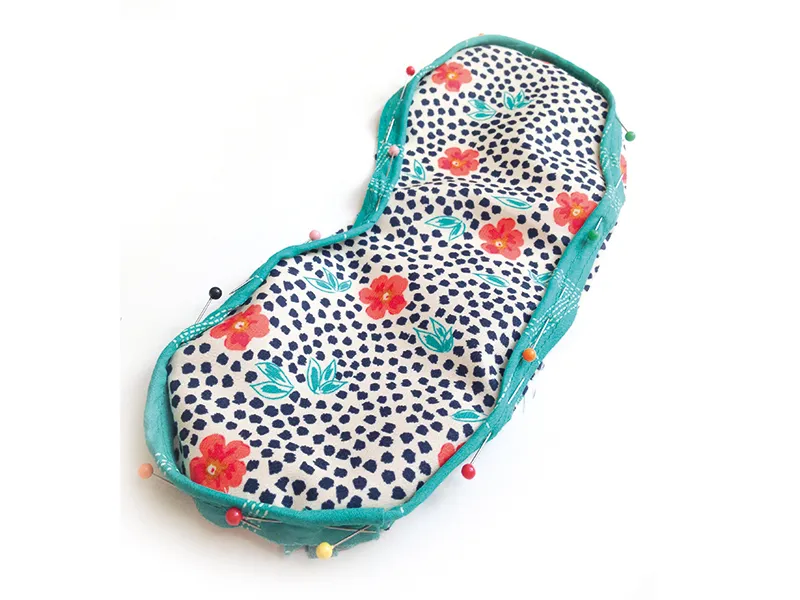
Step three: To join the short ends, trim down the cord so it meets the other end. Fold over one fabric short end and tuck the other inside it.
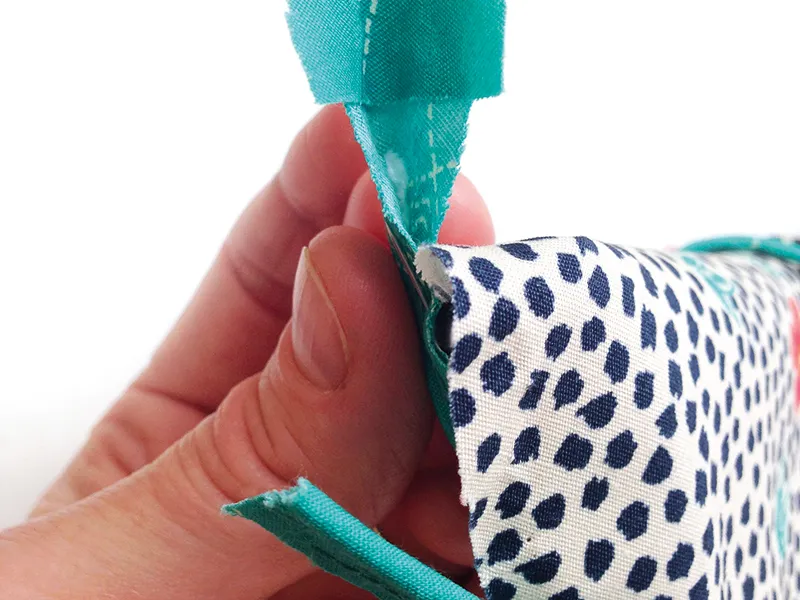
Step four: Sew the covered piping into place.
Step five: Fold the elastic casing fabric strip in half lengthways with RS facing then sew together down the length and turn RS out.
Step six: Thread the elastic though the casing and stitch across both ends to hold the elastic.
Step seven: Pin the elastic casing centrally across the sides of the mask.
Step eight: Pin the mask lining RS together on top and stitch together close to the piping cord, leaving a turning gap on one side.
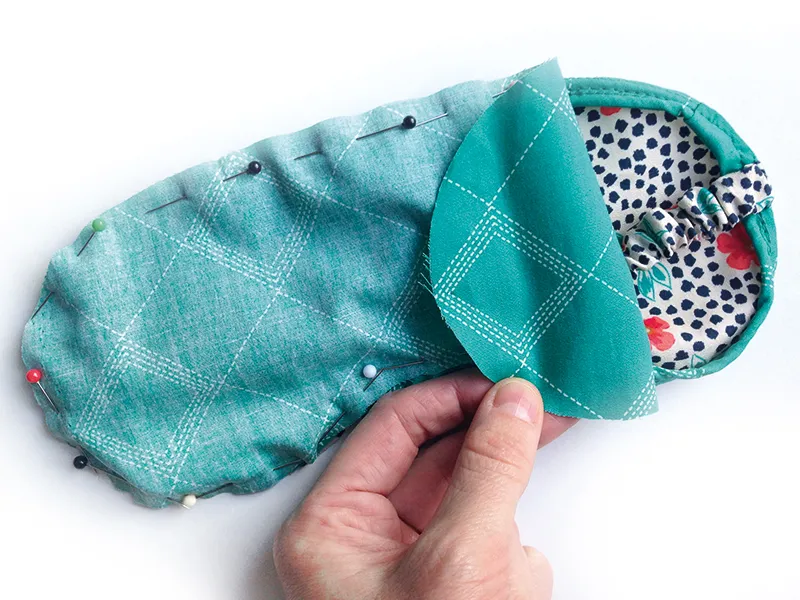
Step nine: Turn RS out, slip stitch the gap closed.
Making the bag
Step one: Place the long edge of one lining strip RS together across the top short edge of the main bag, matching the top short raw edges.
Step two: Stitch together across the top then turn under the other raw long edge of the lining piece by 1.5cm (5⁄8in).
Step three: Repeat this with the other main bag and lining strip.
Step four: Place the joined pieces RS facing and stitch together down the sides, leaving a 1cm (15⁄8in) gap on each side positioned 4cm (2in) down from the seam.
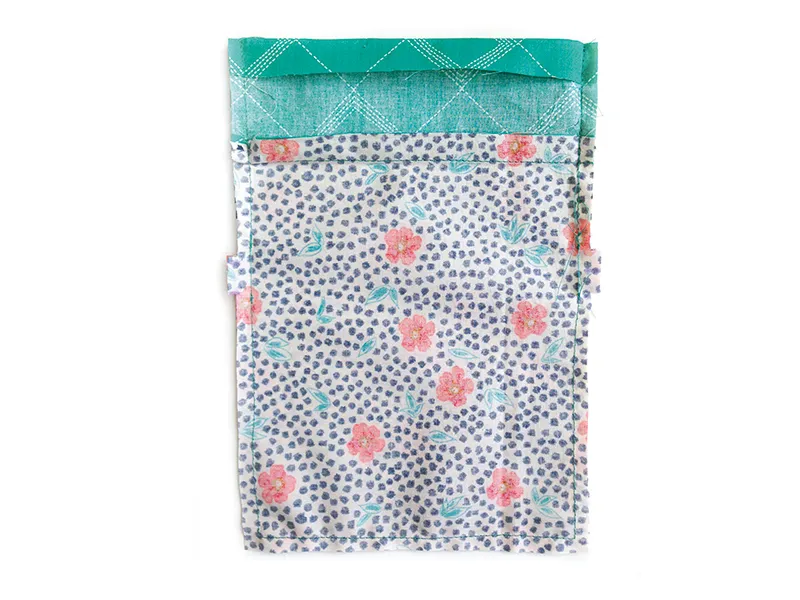
Step five: Press the side seams open then stitch a box around the gaps.
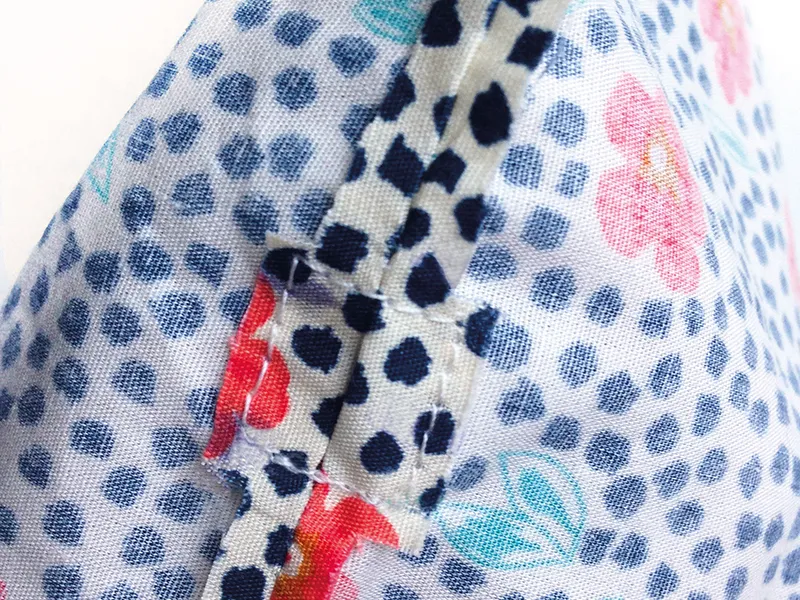
Step six: Turn the bag RS out, tuck the lining strip into the bag and pin into place.
Step seven: Sew two lines all the way around to make the casing channel, positioning them at the top and bottom of the boxes.
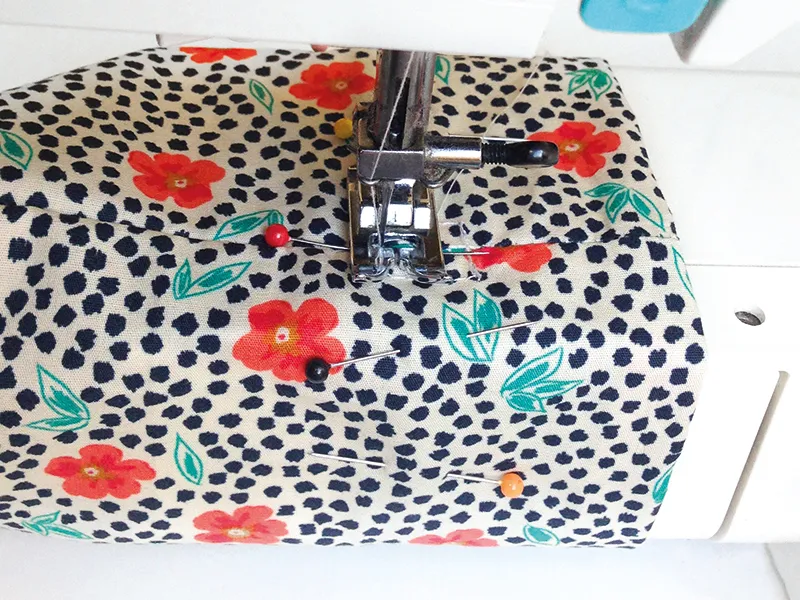
Step eight: Cut the ribbon in half and thread one length though the casing, then knot the ends.
Step nine: Thread the other length through but starting and finishing at the opposite side.
Step ten: Fold your mask in half, pop it into the bag and pull the ribbons to close.
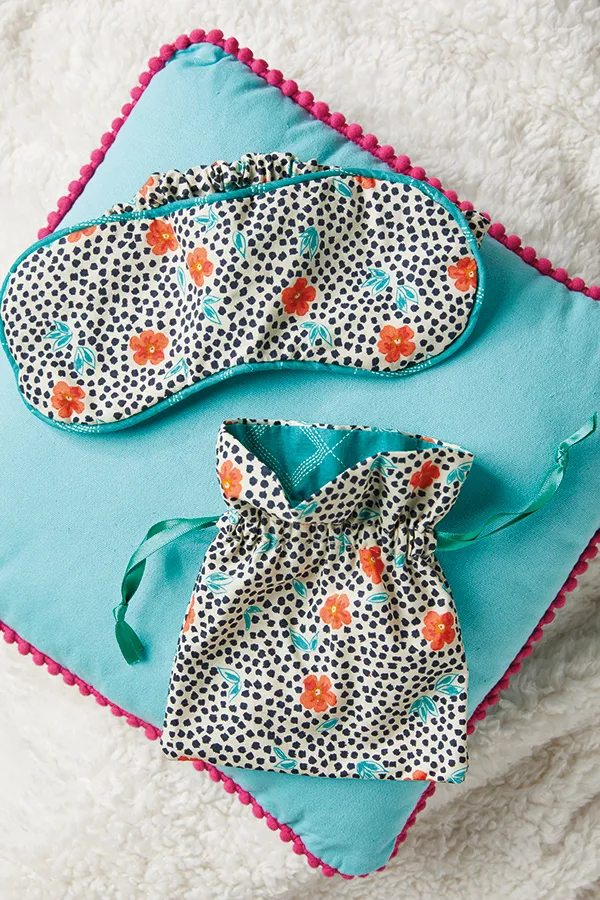
Sweet dreams made easy
This quick-sew sleep mask is a fun, satisfying project that adds a cosy, handmade touch to bedtime.
Use up that scrap fabric
Looking for more ways to use up leftover fabric? Learn how to turn fabric scraps into Christmas baubles.



